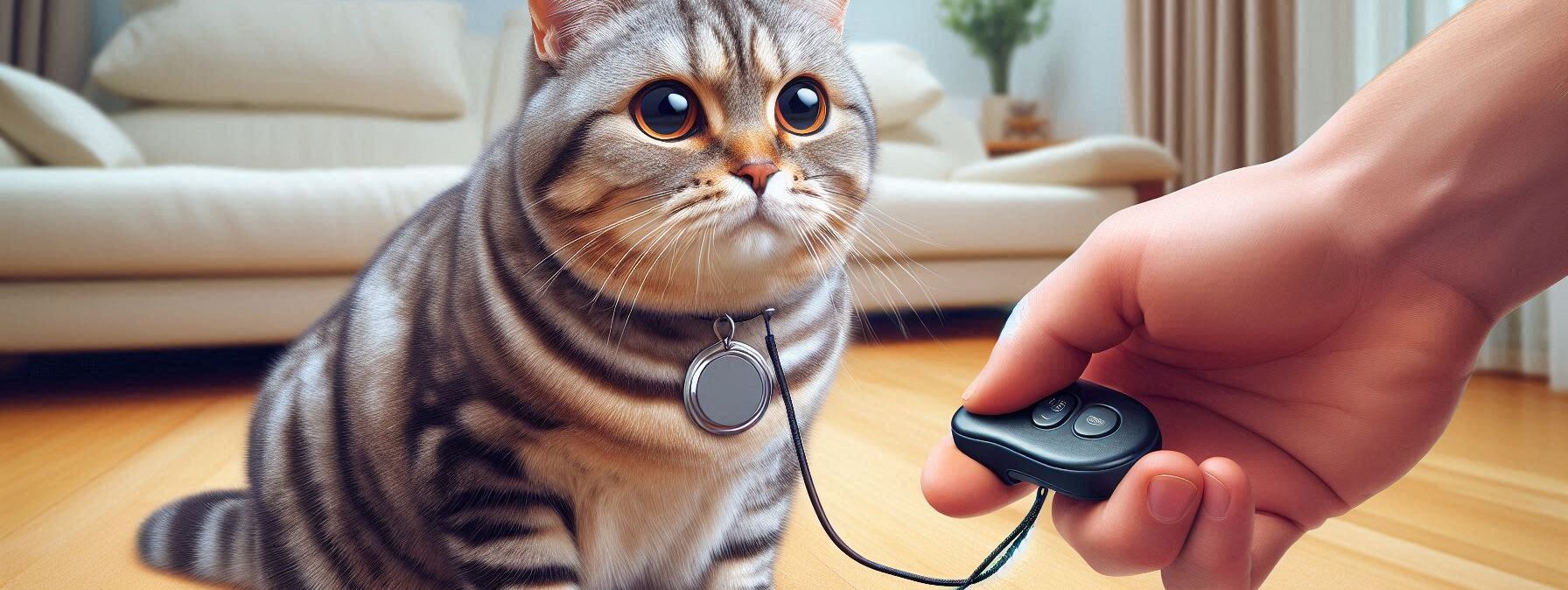Please Note: This post may contain affiliate links. If you click one of them, we may receive a commission at no extra cost to you. As an Amazon Associate, I earn from qualifying purchases.
I thought clicker training for cats was a clever technique to teach my cat how to play the piano when I first heard about it. Spoiler alert: my cat still can't sing! But as I learned more about this interesting way of training, I found out that clicker training is more about talking to your dog and rewarding them for good behavior than it is about musical ability. This method not only helps you teach your cat different commands, but it also makes your relationship with your furry friend stronger. So let's look into why you might want to think about adding this useful technique to your cat-care repertoire.
Top Takeaways and Key Concepts
- Use a clicker to mark desired behavior immediately for clear feedback.
- Reward cats with treats or toys to reinforce positive actions.
- Keep training sessions short, fun, and tailored to your cat’s personality.
- Incorporate mental challenges and play to reduce boredom and unwanted behaviors.
- Vary exercises and rewards to maintain interest and strengthen your bond.
Article Summary
The text explains how clicker training is an effective, positive-reinforcement method for teaching cats new skills while improving their behavior and mental stimulation. A clicker provides immediate feedback, helping cats associate specific actions with rewards like treats or toys. Regular, engaging sessions prevent boredom, curb destructive habits, and tap into natural hunting instincts. Flexibility in exercises and rewards keeps cats motivated, while the structured play fosters trust and strengthens the owner–cat relationship. Overall, clicker training is both an enrichment tool and a way to create lasting bonds while discovering hidden talents in your cat.
Video Summary
Clicker training is based on a small, handheld gadget that emits a clicking sound when you press it. This noise is a cue for your cat that they did the right thing. The click gives you rapid response, which makes it easy to talk to your cat. It tells them exactly what they did right at that moment. When you give them a sweet treat or their favorite toy, this makes them think of the behavior you want them to do.
Handy Amazon Shopping Directory for Cat Supplies
Cat Food - Cat Toys - Cat Health - Grooming - Carriers - Cat Beds - Apparel
Furniture - Cat Doors - Collars - Feeding/Watering - Flea/Tick Control - Treats
One of the best things about clicker training is that it focuses on positive reinforcement. Clicker training is different from traditional methods that may employ punishment or negative consequences. Instead, it focuses on rewarding good behavior. This method helps you and your pet build trust and respect for each other. Cats are naturally interested, and giving them prizes makes them want to learn instead of feeling scared or coerced.
Clicker training is also very flexible! You may teach your cat simple orders like “sit” or “high five,” but you can also teach them more complicated feats like jumping through hoops or even fetching toys. Believe it or not, some cats like to fetch! There are almost no limits to what you can do, save for your own ingenuity and patience.
Another interesting thing about this strategy is how it uses natural cat behaviors. Because cats are natural hunters, adding play to their training sessions is a great way to tap into their natural instincts. Using toys as rewards during clicker sessions not only keeps their predatory instincts keen, but it also keeps their minds busy.
Many cat owners also feel that regular training sessions improve their pets' health in general. Mental challenges keep cats from getting bored, which is a typical problem for indoor cats that can lead to bad behavior if not dealt with. You give them an enriching experience by teaching them new abilities through clicker training. This keeps their minds active and interested.
It's vital to remember that this method requires a lot of patience. Every cat learns at their own speed. Some may pick things up fast, while others may need more time and practice to get the hang of new things. You and your cat will stay motivated if you celebrate tiny wins along the way!
If you want to find a new method to talk to your cat and improve their quality of life through entertaining activities and mental challenges, clicker training might be the answer. If you keep practicing and giving Mr. Whiskers lots of treats (and maybe no pianos), you might be shocked with what he can do. Who knows? He might surprise you with what he can do now!
Jump to Content
What Is Training with a Clicker?
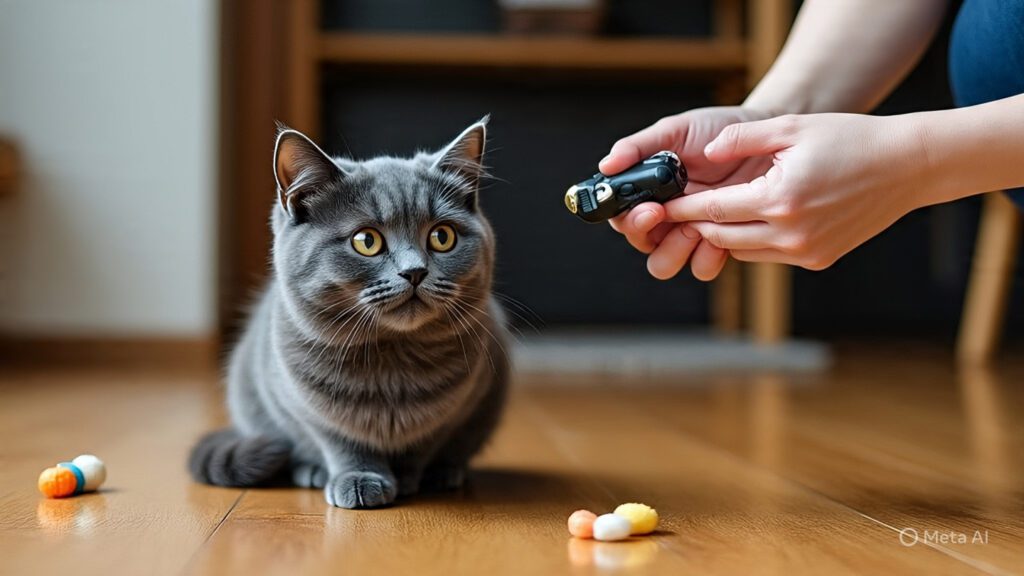
If you're curious about what clicker training is, let me explain it to you. Basically, it means utilizing a little device that you hold in your hand and that generates a characteristic clicking sound when you press it.
This sound tells your cat that they did something properly, like learning how to sit on command or avoiding the laser pointer for five seconds.
You might be wondering, “Why not just give them treats?” “Honestly, goodies are fantastic motivators (who doesn't enjoy snacks?), but they may often make things confusing.
The click sound gives your cat fast feedback that helps them remember what they should do without making them wait for their treat. It's like saying “Well done!” ” in a happy voice before giving the cookie! This immediate praise is important because it helps your cat draw a direct link between what they did and the reward they got, which helps them learn and understand more quickly.
It's interesting that a lot of animal trainers employ this strategy on more than just cats. Clicker training has worked for everyone, from dolphins doing feats at SeaWorld to dogs learning not to chew up your beloved shoes. The fact that this method works on so many different types of animals shows its main point: positive reinforcement can work on any species.
In fact, clicker training was first used to train marine creatures, showing that it can teach complicated actions by making communication plain and giving rewards. Trainers discovered that employing a unique sound might facilitate the connection between human guidance and animal reaction, resulting in effective interactions and performances. This practice swiftly extended to other animals, especially dogs, and finally made its way into the world of teaching cats.
One reason why clicker training works so effectively with so many different kinds of animals is that it works with their natural tendencies. Animals are driven by rewards, such food, playing, or affection. These things make them want to do the things you want them to do again. For cats, who might seem distant or independent at times, having an organized yet fun approach to interact with their human friends can be very helpful.
Also, this strategy helps pets and their owners get along better. You are not only teaching your cat new skills by routinely having training sessions that focus on positive reinforcement, but you are also creating trust and improving your relationship. Your cat learns that playing with you is exciting and rewarding, which is a win-win situation!
Clicker training can also help with typical behavioral problems in cats. For example, if Mr. Whiskers likes to scratch furniture or jump on countertops without being asked, you can change those habits by giving him clicks and treats when he does something else, like using a scratching post or staying on the floor. This proactive approach helps change unpleasant behavior while making sure your cat knows that you care about them and understand them.
Another good thing about clicker training is that it can be changed to meet each cat's personality and way of learning. Some cats may respond better to some forms of rewards than others. For example, one cat can go crazy for tuna treats, while another might like feather toys better. Knowing what makes your cat most excited will make your training sessions more effective.
Clicker training is a great way to teach commands and make our pets' life better through interactive learning experiences. Its effectiveness with many different types of animals shows that it works for everyone because it is based on the idea of positive reinforcement. Clicker training could be just what you need if you want to teach Mr. Whiskers some cool tricks or just want him to quit knocking over houseplants when he's playing.
Getting Closer to Your Cat
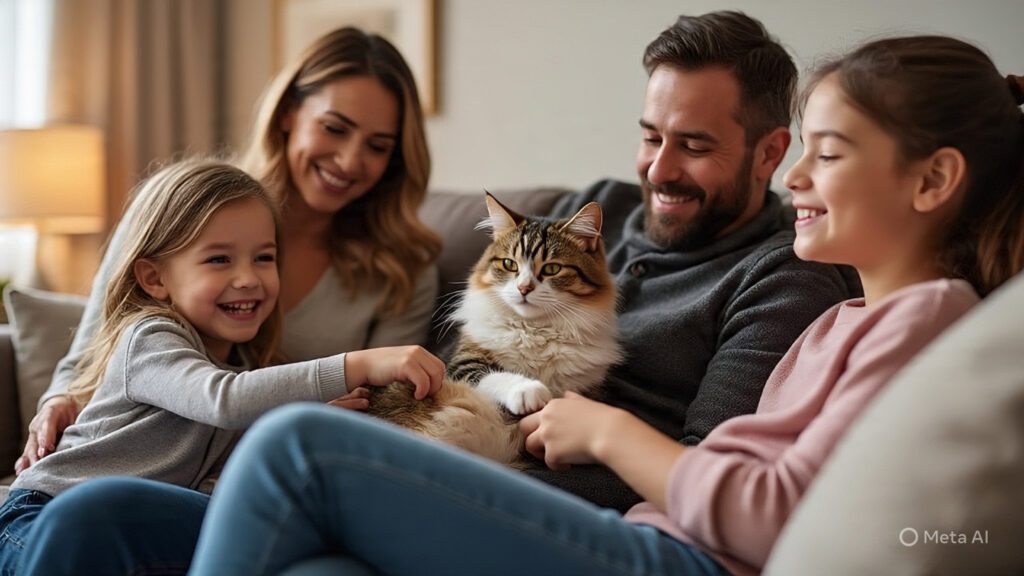
Clicker training is interesting since it makes your bond with your pet better.
We build trust and respect when we make our cats do things that require them to work and focus together, like following directions or learning new abilities.
Every time you push a button and praise your cat, you are sending a clear message to the cat.
They learn about the cause and effect, which is a good thing in this case. This slowly makes both sides feel more connected, almost like two people getting closer by eating pizza together.
Also, spending quality time together during training sessions is a great way for both you and your cat to relax and enjoy one other's company, which is a nice change from the same old daily routines. Training is no longer just a way to learn; it becomes a way to connect with each other and make your relationship stronger.
While you play with Mr. Whiskers, you might hear him snoring cutely as he relaxes between requests, or you might be amazed by how quickly he learns new tricks, like a baby experiencing the world for the first time. Every click and goodie that works strengthens not just his talents but also the bond you have with him. This common adventure of discovery can bring you more joy and laughter than binge-watching another season of reality shows.
Those performances might be fun for a little while, but nothing beats seeing your cat's personality shine through as they learn to do things. You will be amazed by how smart and adaptable they are. These are the things that make us love our furry friends so much. Every training session is full of surprises. For example, Mr. Whiskers can suddenly learn a new trick or get really excited about a toy. These moments make lasting memories that bring you closer together.
Also, spending this time together helps you two trust and talk to each other more. As Mr. Whiskers learns to connect good things with your presence, he becomes more aware of your cues and commands, which makes things go more smoothly outside of training sessions. The trust that is formed during these times can lead to better conduct in daily life, like being less anxious when he goes to the vet or more friendly when guests come by.
Also, adding play to training keeps things interesting and fun for both sides. Don't cling to a strict schedule; instead, let things happen naturally. Change up the incentives or add new activities that fit with what he's learning. This freedom keeps him interested and makes each session feel like an adventure instead of a job.
In the end, taking time off to train Mr. Whiskers not only improves his skills, but it also improves your own health by giving you a fun way to spend time with someone outside of your normal routine. Instead of sitting on the couch and watching another episode of strangers getting into trouble on screen, why not spend that time building the amazing link you have with your cat through fun training sessions?
Training for Mental Stimulation
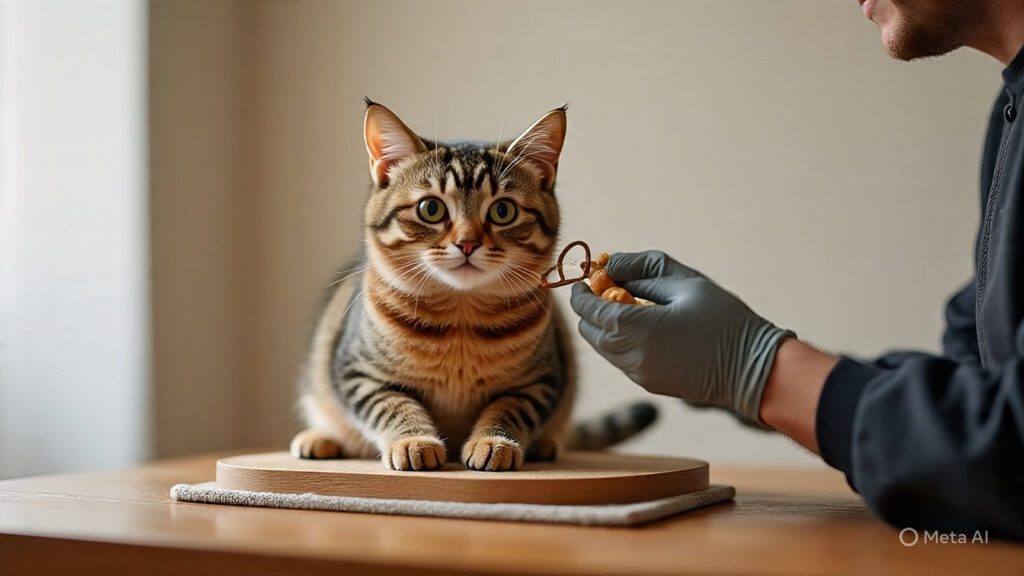
Now let's talk about fun! It's just as vital for them to keep their minds active as it is for us, and maybe even more so since they don't have Netflix accounts yet. The fighting amongst cats that happens after a romance between two families is much more interesting than clicker training.
You see, a pet cat is a hunter. They like to take on challenges. The obstacles can be talked about in more detail, along with how they help with cognitive stimulation through training that includes clicks and rewards.
You may tell the cat to “jump through this hula hoop” or “look for the toy in the house.” (Yes, it's the best game of hide and seek ever.) This lets the cat solve issues and feel like a hunter without killing anything.
Now, think about this: a cat that is mentally stimulated will have less behavior problems than a cat that is bored. It's important for our cats to stay mentally active since it keeps them from getting into trouble and helps them use their energy in good ways.
How many times have you seen Mr. Whiskers decide that climbing the curtains would be a fun thing to do? It's often very funny to see him go from lying on the couch to climbing up vertical curtains like a little acrobat! These behaviors may seem funny at first, but they usually come from energy that hasn't been released yet.
If cats don't have something to do, they can get bored and angry. When cats are bored, they typically do things like knock over plants, scratch furniture, or run around the house like crazy. You can help Mr. Whiskers get the cerebral workout he needs while also getting rid of these annoying habits by adding systematic clicker training to your daily routine.
Clicker training is a great way to get rid of all that extra energy. Your cat will have to pay attention and focus on the process, which will turn their free time into fun play. Mr. Whiskers learns new orders and tricks through positive reinforcement, which keeps him busy and less likely to get into trouble around the house. Every click means success and makes him think about what he's doing, which helps him learn and get excited.
Training sessions can also be designed to meet his hobbies and natural inclinations. For example, if he loves chasing after toys or pouncing on things, add those things to your training! Give him toys as rewards throughout sessions to keep him interested and enthused about taking part. This not only makes learning fun, but it also helps him satisfy his hunting instincts in a good way.
Regular mental challenges also help cats relax a lot. Exercise is good for both our bodies and minds, and it's also good for our furry friends. Clicker training Mr. Whiskers not only gives him a way to let off steam, but it also helps him get better at solving problems. It's a win-win situation!
As you both learn more about each other through clicker training, you will probably see additional good changes in his behavior besides less troublemaking. A cat that is mentally stimulated is more likely to be confident when it meets new people or explores new areas of your home.
By making mental stimulation a priority through activities like clicker training, you're investing in Mr. Whiskers' general health and happiness while also making your home a peaceful place to live without any behavioral problems that come from boredom! So why not take advantage of this chance to grow? You might have fun times full of laughing and possibly find hidden abilities along the way!
Training Should Be Fun and Exciting
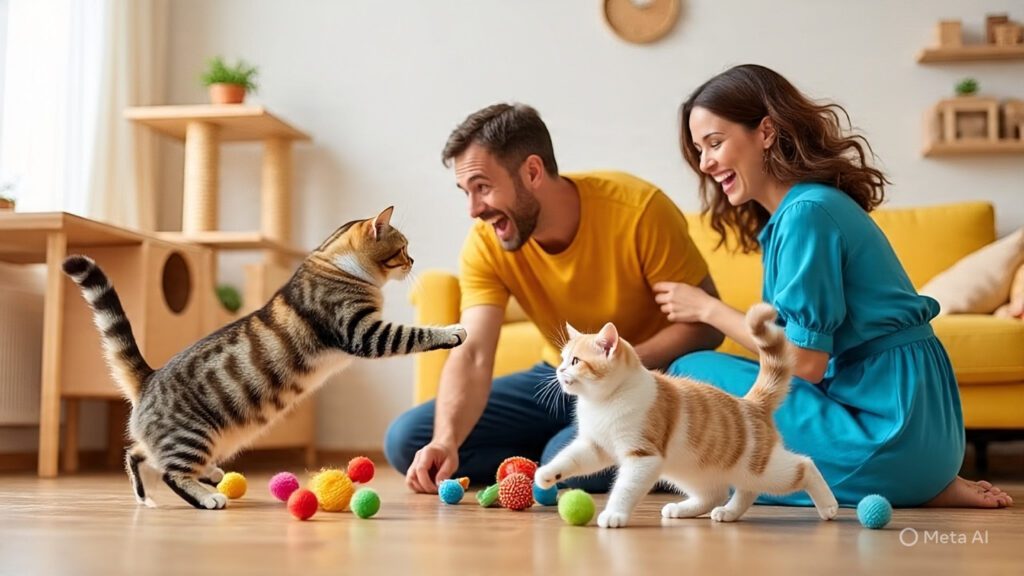
One of the things I like about using a clicker to train animals is that it's entertaining, all things considered. For both people and animals!
It may sound crazy, but cats are just like kids; they love to play games.
These enjoyable tasks, like racing and playing eating games or creating hurdles, turn the most boring periods into fun ones, but there is always the chance of a little spilled along the way.
You can start by breaking the hard labor down into smaller chores. This way, our tiny furballs can learn easily, and we can give them lots of reasons to reward them at every step.
For instance, don't expect Fluffy to sit exactly how you want her to after just one order. Instead, make it your objective for her to just pay attention to you when you click when she stares at you!
As the training goes on, it's important to get new ideas and guidance. This is especially true when you don't notice results even though you've worked so hard. When things don't appear to be moving forward, it's natural to feel down. But remember that being frustrated can really help you stay motivated! I strongly believe that if you keep at it and think outside the box, you'll get results.
Adding new techniques or variations to your workout program not only keeps things interesting, but it also stops boredom from creeping in. After all, no one appreciates cranky cats who are bored with doing the same thing over and over. Cats are naturally interested and like to try new things. They do best when they have a lot of diverse things to do. You can keep Mr. Whiskers interested and eager about learning by changing up how you train him. This could mean using new tricks, different prizes, or even moving the training to a new place.
Adding play to your training sessions is also a great approach to keep people interested. You can tap into your cat's natural instincts and reinforce good actions by using toys or interactive games as part of the clicker training process. This active connection turns something that could feel like a duty into a fun way for you both to bond.
To sum up? Clicker training is more than simply a scientific method; it's also an art form that creates a wonderful bond between pet and owner through communication. This method not only improves your pet's training, but it also makes your relationship with them stronger. The conversations you have throughout these sessions make both of your lives better and convert ordinary occasions into treasured memories.
Also, clicker training might help you find hidden skills in your cat! You could be surprised at how quickly she learns new tricks or skills that will impress both family and friends. With time and effort, she might learn to do everything from high-fives to spins, and every time she did something new, it would bring joy and laughter into your home.
Why not give it a shot? Join Mr. Whiskers on this adventure of exploration! You could be pleasantly surprised by what she can do, and you might even inspire other people to try clicker training with their own pets! Every cat has its own special talents that are just waiting to be discovered. All you have to do is give them fun and interesting things to do together!
Suggested Resources:
Clicker Training Cats
https://www.clickercats.com/
The Benefits of Clicker Training
https://www.thecatnip.com/clicker-training-benefits/
How To Train A Cat With A Clicker
https://www.catbehaviorassociates.com/clicker-training-guide/
Frequently Asked Questions
What is clicker training for cats?
Clicker training uses a small handheld device that makes a clicking sound to mark desired behaviors, then pairs it with a reward like a treat or toy.
Why does the click sound help cats learn?
The click delivers instant feedback, helping cats connect the exact behavior they performed with the positive reward that follows.
Can clicker training improve behavior problems?
Yes, regular training reduces boredom and can redirect unwanted behaviors like scratching furniture or jumping on counters into positive actions.
What type of rewards should be used during clicker training?
Small treats, toys, or play can all be used, and rotating reward types helps maintain motivation and interest.
How long should a clicker training session last?
Short sessions work best, usually just a few minutes at a time, keeping things fun and preventing frustration.
Can clicker training strengthen the bond with my cat?
Yes, shared sessions build trust, enhance communication, and boost connection between you and your cat.
Can all cats learn clicker training?
Most cats can learn this method, but each cat progresses at their own pace, so patience and consistency are important.

Kevin Collier is a dedicated feline enthusiast and expert contributor at CatFAQ.com, where he shares his knowledge on cat health, training, and overall well-being. With years of experience caring for and studying cats, Kevin provides insightful tips and practical advice to help cat owners nurture and understand their pets better. His passion for enhancing the human-animal bond shines through in his articles, making them a valuable resource for anyone looking to improve their cat’s quality of life. Whether it’s training techniques or health care tips, Kevin aims to empower cat owners with the information they need to ensure their furry companions thrive.

